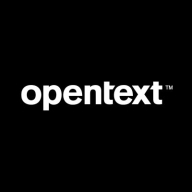

OpenText Core Application Security and GitHub Advanced Security are notable tools within the application security category. GitHub Advanced Security appears to have an advantage in user satisfaction due to its seamless integration with GitHub and ease of use for developers.
Features: OpenText Core Application Security is recognized for comprehensive scanning capabilities, including HIPAA compliance, strict priority guidance, SAST, DAST, and central management features, making it ideal for expert-reviewed static and dynamic testing results. GitHub Advanced Security provides seamless integration in the development process, offering security scans, dependency checks, real-time threat protection, and customizable queries with CodeQL.
Room for Improvement: Users of OpenText Core Application Security desire better integration with incident management systems, fewer false positives, faster scan times, and improved new technology support. GitHub Advanced Security requires enhancements in query customization, reporting features, and programming language support, with noted complexities in deployment processes.
Ease of Deployment and Customer Service: OpenText Core Application Security provides flexible deployment options, including on-premises and cloud-based solutions, but receives mixed customer service reviews due to occasional unresponsiveness and delays. GitHub Advanced Security integrates well within hybrid and cloud environments through the GitHub ecosystem, with generally positive support ratings but noted areas for improving response time.
Pricing and ROI: Both products are considered expensive, although OpenText Core Application Security offers flexible licensing options like pay-per-scan and subscriptions, advantageous for various use cases. GitHub Advanced Security, often perceived as costly for large teams, applies a subscription model based on developer headcount. Despite high costs, both are seen as providing solid ROI through improved security and reduced vulnerability risks.
| Product | Market Share (%) |
|---|---|
| GitHub Advanced Security | 5.8% |
| OpenText Core Application Security | 3.4% |
| Other | 90.8% |


| Company Size | Count |
|---|---|
| Small Business | 1 |
| Midsize Enterprise | 4 |
| Large Enterprise | 7 |
| Company Size | Count |
|---|---|
| Small Business | 17 |
| Midsize Enterprise | 8 |
| Large Enterprise | 44 |
GitHub Advanced Security secures data by scanning for vulnerabilities in dependencies, secret scanning, and protecting sensitive information. It integrates seamlessly, reducing reliance on multiple tools and optimizing vulnerability detection.
GitHub Advanced Security is designed to enhance security awareness by offering comprehensive tools for secret scanning, code analysis, and SCSS dependency checks. AI-driven features deliver accurate security insights while minimizing false positives. It provides valuable integration with Azure DevOps, maintaining control within dashboards and enabling external systems' support through APIs. With CodeQL, users can perform custom queries across projects. Propelled by Microsoft, the platform enhances operational frameworks with essential security features, although improvements are needed in dashboard consolidation, reporting, and integration mechanisms. Users seek better customizability, language support, and training resources to ensure smoother implementation.
What are the key features of GitHub Advanced Security?Industries implement GitHub Advanced Security to maintain robust security standards. It is favored by technology sectors seeking seamless integration with Azure DevOps and looking for customizable security tools tailored to project needs. Financial institutions value its accurate threat detection and compliance support, while enterprises focus on its comprehensive dependency scanning and code analysis capabilities to safeguard critical assets. The adaptability of GitHub Advanced Security across different operational environments illustrates its practical benefits.
OpenText Core Application Security offers robust features like static and dynamic scanning, real-time vulnerability tracking, and seamless integration with development platforms, designed to enhance code security and reduce operational costs.
OpenText Core Application Security is a cloud-based, on-demand service providing accurate and deep scanning capabilities with detailed reporting. Its integrations with development platforms ensure an enhanced security layer in the development lifecycle, benefiting users by lowering operational costs and facilitating efficient remediation. The platform addresses needs for intuitive interfaces, API support, and comprehensive vulnerability assessments, helping improve code security and accelerate time-to-market. Despite its strengths, challenges exist around false positives, report clarity, and language support, alongside confusing pricing and package options. Enhancements are sought in areas like CI/CD pipeline configuration, report visualization, scan times, and integration with third-party tools such as GitLab, container scanning, and software composition analysis.
What features define OpenText Core Application Security?Industries like mobile applications, e-commerce, and banking leverage OpenText Core Application Security for its ability to identify vulnerabilities such as SQL injections. Integrating seamlessly with DevSecOps and security auditing processes, this tool supports developers in writing safer code, ensuring secure application deployment and enhancing software assurance.
We monitor all Application Security Tools reviews to prevent fraudulent reviews and keep review quality high. We do not post reviews by company employees or direct competitors. We validate each review for authenticity via cross-reference with LinkedIn, and personal follow-up with the reviewer when necessary.